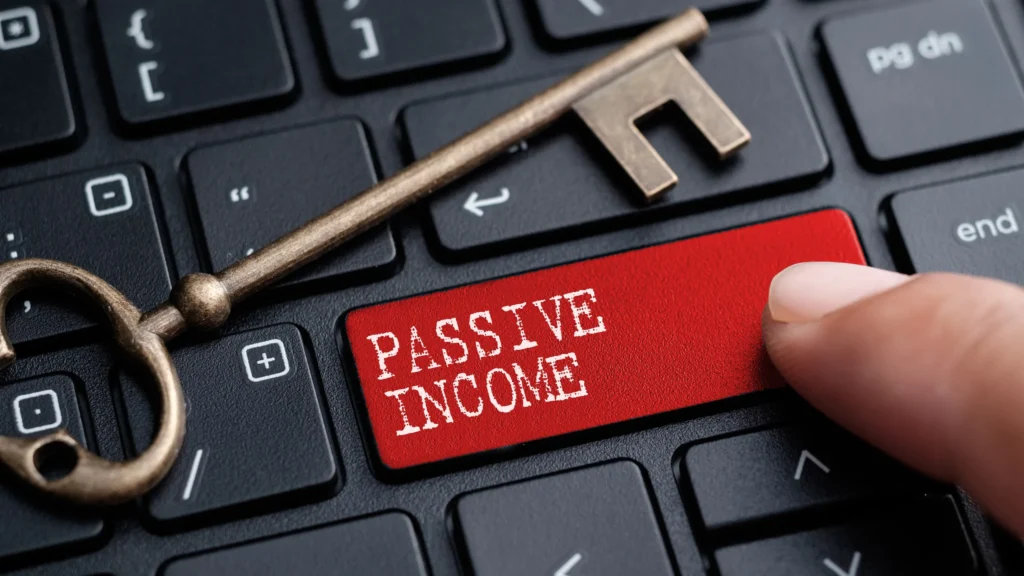As a freelancer, the question of retirement often feels overwhelming. Without the structure of a traditional job, the pressure to save for the future can be more daunting. Unlike employees with automatic deductions for retirement savings, freelancers have to navigate the entire process themselves.
While it may seem challenging, freelancers can still build a secure financial future by employing the right retirement strategies. With careful planning and knowledge, freelancers can overcome these obstacles and prepare for a comfortable, worry-free retirement.
In this post, we’ll explore the unique challenges of freelancers retirement and offer actionable retirement tips to help you build a sustainable income stream that supports your long-term financial goals

Freelancer’s Retirement Planning: A Guide
Freelancers often overlook the importance of retirement planning until later in their careers, but getting started early is one of the best decisions you can make. The key to effective retirement planning as a freelancer is understanding your financial goals and creating a strategy that suits your unique circumstances. Unlike employees who may rely on employer-sponsored 401(k) plans, freelancers must develop their own systems for saving and investing.
The first step is to establish clear, realistic financial goals for your retirement. How much money will you need to maintain your lifestyle once you stop working? Will you want to continue to travel, pursue hobbies, or live in a different area? Consider these questions carefully and assess your financial situation to determine how much you need to save each month.
The next step is setting up a retirement account. Many freelancers use an Individual Retirement Account (IRA) or a Self-Employed 401(k) to shelter their savings from taxes. A financial advisor can help you understand which retirement options are best for you.
Having a plan in place is vital to giving yourself the best chance at a secure retirement. With a clear strategy, you can be confident in your ability to build the retirement savings you need.
Setting Realistic Retirement Expectations
Retirement expectations can differ greatly from reality, especially for freelancers. Many envision retiring early with a lavish lifestyle, but to reach that goal, freelancers need to carefully consider their earnings potential, freelancers savings rate, and future income stability. Planning for a comfortable retirement requires making realistic adjustments based on past income trends.
Don’t let the excitement of early retirement cloud your financial decisions. Assess your lifestyle, adjust your spending habits, and set achievable goals based on where you are financially today. A realistic plan ensures you’re not caught off guard when it’s time to retire.
An important part of this process is understanding that your freelancing career may evolve over time. Your income may rise, but it could also decrease, depending on industry changes or personal circumstances. It’s crucial to plan for both the best and worst scenarios.
You may not reach your ideal retirement lifestyle immediately, but by making steady adjustments, you can get closer to your retirement goals. The key is to prioritize flexibility, adjust your expectations periodically, and make sure your plans are always aligned with your financial progress.
Understanding the Challenges of Freelancers Retirement
The challenges freelancers face in retirement planning are unique. Without a steady paycheck or employer-sponsored retirement benefits, it can be difficult to save consistently for retirement. One of the most significant hurdles freelancers must overcome is income unpredictability. Unlike salaried employees who receive regular paychecks, freelancers’ income often fluctuates month-to-month, making it hard to set aside money for long-term retirement savings strategies for self-employed individuals.
Another challenge is the lack of access to traditional retirement plans like a 401(k). Employers often match contributions to 401(k) plans, but as a freelancer, you’re responsible for making all of your contributions without any employer assistance. Additionally, self-employed individuals often don’t have access to workplace benefits like health insurance, which can increase the amount of money you need to set aside for both healthcare and retirement.
Freelancers also need to be disciplined in their approach to saving for retirement . There’s no one else reminding you to contribute to your retirement account. You must take the initiative, and without a clear plan in place, it’s easy to fall short of your savings goals.
By understanding these challenges, freelancers can take a proactive approach to retirement planning and find ways to overcome these barriers.

The Power of Consistency in Saving
Freelancers often face fluctuating income, which can make saving for retirement seem like a daunting task. However, consistency is critical. Even if you can’t contribute large amounts regularly, it’s crucial to save a little each month. Small contributions can add up over time, especially if you stay committed.
One effective strategy is automating your savings. Set up an automatic transfer from your checking account to a retirement account. This way, you won’t have to think about it, and you’ll build your savings without even noticing.
Additionally, consistency doesn’t mean large contributions. Even setting aside $100 a month can make a difference in the long run, especially when compounded over decades. Building a habit of saving consistently can have a significant impact on your financial security in retirement.
Freelancers may sometimes experience months of high earnings, followed by leaner months. During high-income months, try saving more than usual to account for slower months. This approach helps smooth out the fluctuations and ensures consistent contributions, even when income is unpredictable.
Creating a Sustainable Income Stream for Freelancers
A sustainable income stream is a cornerstone of successful retirement planning for freelancers. It’s not enough to rely on a handful of clients or a few projects; you need to create multiple income sources that will support you both now and in retirement. Diversifying your income sources can help mitigate the risk of income loss due to client turnover or industry fluctuations.
One effective way to build a sustainable income stream is by offering a variety of services. For example, if you’re a freelance writer, you might also consider offering consulting or coaching services to clients in your industry. This can help you expand your reach and generate steady revenue streams.
Additionally, investing in tax-efficient assets can help build wealth over time while minimizing your tax burden. Consider setting up a tax-deferred retirement account like a Traditional IRA, which allows you to make contributions before taxes are taken out, potentially lowering your taxable income. Regularly reviewing your financial plan is also crucial, as it helps ensure that you are on track to meet your long-term goals.
Building an emergency fund is another critical aspect of creating a sustainable income stream. Having savings that you can access during slow periods or unexpected financial setbacks gives you peace of mind and allows you to focus on growing your freelance business without worrying about short-term cash flow problems.

Leveraging Passive Income for Freelancers
Freelancers often focus on active income—working for clients and getting paid for their time and effort. However, passive income can help supplement savings for retirement without requiring additional work. Building passive income streams is crucial for creating long-term financial security.
Consider creating digital products that sell automatically, such as eBooks, courses, or stock photos. Once created, these products can continue generating income with minimal effort on your part. Over time, they can become significant contributors to your retirement fund.
Another passive income option is investing in dividend-paying stocks. These stocks pay regular dividends, which can be reinvested into your portfolio or used for regular withdrawals in retirement. Investing in real estate, such as rental properties, is another way to build passive income.
The key to successful passive income is to begin building it early. It may take time before your passive income sources generate substantial returns, so the sooner you start, the better.
Maximizing Your Freelance Earnings for Retirement
Freelancers are in complete control of their earning potential. To maximize your earnings, it’s important to develop a strategic approach to your pricing, client acquisition, and marketing efforts. The first step is to evaluate your pricing structure. Are you charging what your services are truly worth? Many freelancers undervalue their work, which can prevent them from building a solid financial foundation.
As you build your client base, focus on offering high-demand services that will help you stand out in a competitive marketplace. Take the time to establish a strong online presence and make use of platforms like LinkedIn, Upwork, or Behance to showcase your work. A solid portfolio is key to attracting higher-paying clients.
Networking with other professionals in your industry can also open doors to new opportunities. Consider collaborating with other freelancers on larger projects, or offering a discounted service to a potential client in exchange for referrals.
Negotiating rates is another important skill for freelancers. By setting fair and competitive rates, you ensure that your income remains sustainable and reflective of your skills and expertise. Regularly assess your pricing structure to ensure that it stays competitive within your industry. When you raise your rates, communicate the value of your work to clients, so they understand why the increase is justified.
By focusing on maximizing your freelance earnings, you’re not only ensuring current financial stability but also building a more secure foundation for your retirement strategies.

Understanding Tax Advantages for Freelancers
As a freelancer, tax planning can be a powerful tool for accelerating retirement savings. Many freelancers overlook tax-advantaged accounts like SEP-IRAs or Solo 401(k) for freelancers. These retirement accounts for freelancers allow to contribute more than traditional IRAs and reduce taxable income.
The SEP-IRA is particularly attractive for freelancers with fluctuating incomes. It allows contributions of up to 25% of your net earnings, or $66,000 (whichever is less). This is a much higher limit than a regular IRA, which allows only up to $6,000 in contributions.
Another excellent tax-advantaged option is the Solo 401(k), which can be used to save for retirement while also offering the ability to contribute as both an employee and an employer. This allows you to save even more, with the combined limit reaching up to $66,000 per year.
To maximize your retirement savings, consider working with a financial advisor who understands of tax benefits for self-employed retirement. An advisor can help you take full advantage of these accounts and find the right strategy for your situation.
The Benefits of Starting Early for Freelancers Retirement
The earlier you begin saving for retirement, the more time your money has to grow. Starting early allows you to take advantage of compound interest, where the interest you earn on your savings begins to earn its own interest. This creates a snowball effect that can significantly increase your savings over time.
By starting your freelance retirement planning early, you also give yourself flexibility in how much you need to save each month. If you start saving in your 20s or 30s, you don’t have to contribute as much each month compared to someone who begins saving later in life. The earlier you begin, the more manageable your retirement goals become.
For example, let’s say you start saving $500 a month for retirement at age 30. By the time you reach 60, your contributions would have grown substantially, thanks to the power of compound interest. This is why starting early is one of the best financial decisions a freelancer can make.
Emergency Funds as Retirement Safety Nets
When you’re a freelancer, having an emergency fund isn’t just a good idea—it’s a necessity. Freelance work is often unpredictable, with periods of low income or sudden dry spells. An emergency fund ensures you can continue to pay bills and save for retirement, even when business slows down.
A well-funded emergency fund should cover at least three to six months of living expenses. This will give you the flexibility to take a break from freelancing if needed or invest time into finding new clients without the pressure of immediate financial hardship.
In addition to covering daily expenses, your emergency fund can be used for unexpected medical costs or other urgent expenses that may arise in the future. A strong safety net allows you to maintain peace of mind while focusing on your long-term financial goals.
To build an emergency fund, start by saving a small percentage of your earnings each month. Even if you can’t save the full amount initially, set a target and aim to increase it steadily over time.

Achieving Financial Freedom in Freelancers Retirement
Achieving financial freedom with retirement strategies means that you can retire without worrying about money. For freelancers, this requires a mix of smart financial planning, strategic investments, and disciplined saving. One of the key steps in achieving financial freedom is managing your expenses effectively. While it’s tempting to spend your earnings on non-essential items, it’s important to set aside a portion of your income for long-term savings.
In addition to creating multiple income streams and maximizing your freelance earnings, consider investing in tax-advantaged retirement accounts. Accounts like Roth IRAs and 401(k)s allow you to save money without being taxed until you withdraw it, which helps your savings grow faster.
By developing a well-rounded financial strategy that includes a sustainable income, investments, and controlled spending, freelancers can achieve the freedom to retire comfortably. Whether you want to travel the world or spend more time with family, financial freedom gives you the opportunity to live life on your terms.
With careful planning, discipline, and a long-term approach, freelancers can take control of their retirement and build a secure financial future. While freelancing offers many challenges, it also provides the flexibility and freedom to take charge of your financial destiny. Starting early, maximizing your earnings, and creating a sustainable income stream are all essential steps toward achieving financial independence and enjoying a fulfilling retirement.
Diversifying Your Portfolio as Freelancer Investment Strategies
A well-diversified investment portfolio is key to reducing risk and growing your retirement savings. For freelancers, it’s important to have a mix of assets to weather market volatility. Stocks, bonds, and real estate all play different roles in ensuring your financial security.
Start by considering low-cost index funds or ETFs, which provide exposure to a wide variety of stocks, bonds, and sectors. These funds spread risk across multiple industries and regions, reducing the likelihood of large losses.
Real estate is another great option for diversification. Investing in rental properties or real estate investment trusts (REITs) can generate passive income and provide a hedge against inflation.
Work with a financial advisor to determine an asset allocation strategy that works for your risk tolerance, time horizon, and retirement goals. The right mix of investments will help you manage risk and take advantage of growth opportunities.
Conclusion
In conclusion, freelancer retirement planning, though challenging, is absolutely achievable with the right strategies. By understanding the unique obstacles freelancers face, such as income fluctuations and the lack of employer-sponsored benefits, individuals can make informed decisions and establish a financial plan tailored to their needs.
A sustainable income stream is crucial for freelancers. By diversifying income sources, creating an emergency fund, and investing wisely, freelancers can ensure consistent savings toward their retirement goals. Starting early and maximizing earnings will make a significant difference in long-term financial success.
Ultimately, taking control of your financial destiny as a freelancer requires discipline, knowledge, and strategic planning. With the right approach, you can build the retirement savings needed to enjoy a comfortable and financially independent future. A proactive, long-term strategy will lead to financial freedom, ensuring peace of mind for years to come.
FAQ: Frequently Asked Questions about Retirement Planning for Freelancers
What are the key challenges freelancers face in retirement planning?
Freelancers often face unique challenges in retirement planning, including uncertainty about their income stream, lack of access to employer-sponsored retirement plans, and difficulty building a sustainable income stream.
How can freelancers create a sustainable income stream for retirement?
Freelancers can create a sustainable income stream by diversifying their income sources, investing in tax-efficient assets, and building an emergency fund.
What are some strategies for maximizing freelance earnings for retirement?
Freelancers can maximize their earnings by offering high-demand services, building a strong online presence, and negotiating fair rates with clients.
Why is starting early important for freelancers’ retirement planning?
Starting early allows freelancers to take advantage of compound interest, build a larger nest egg, and make progress towards their retirement goals.
How can freelancers achieve financial freedom in retirement?
Freelancers can achieve financial freedom by creating a sustainable income stream, managing expenses, and taking advantage of tax-advantaged retirement accounts.
Source: US News Money | Related articles: Medium / X- Twitter




